Hello sweet friends! Welcome to another historic edition of Fashion Friday. I recently created an 1890s Dressing Gown Wrapper Tea Gown.
I am in the process of organizing and sewing for a historical fashion show that will celebrate the Suffragettes. The 100th Anniversary of the 19th Amendment, which granted women the right to vote, was ratified on August 18, 1920.
The fashion show, among other celebratory events, is scheduled for November 24th at the Farmers Branch Historical Park.
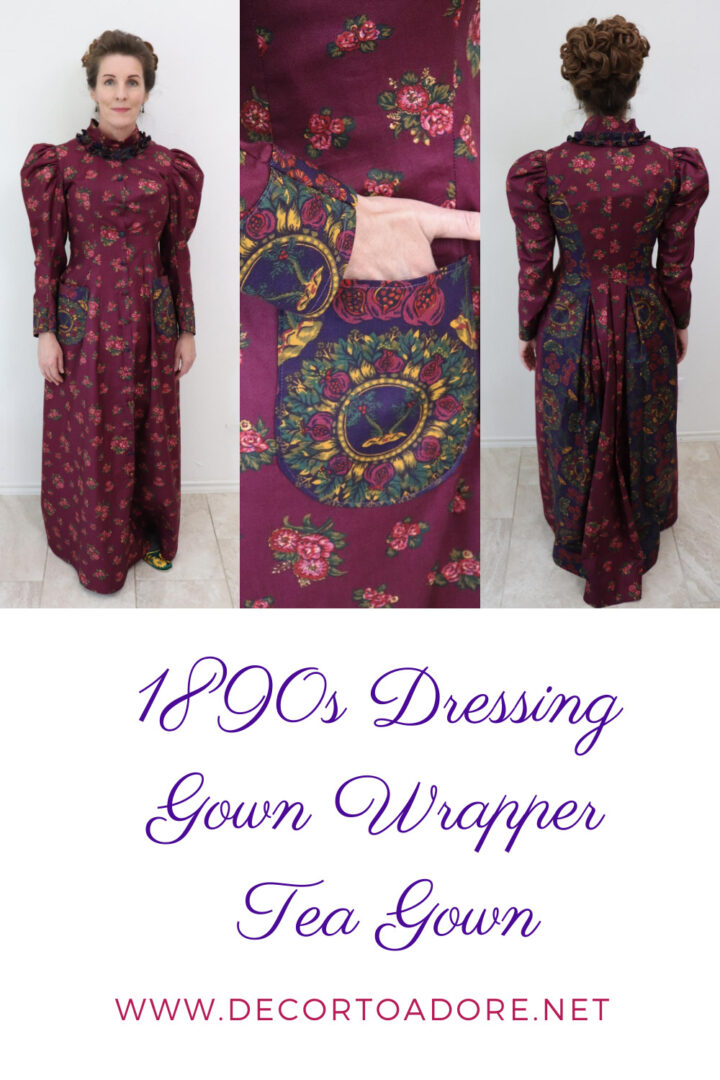
1890s Dressing Gown Wrapper Tea Gown
A robe by any other name might still be a hostess dress. In researching the history of wrappers I found that similar styles could be found under several other names.
The similarities of the garments tended to be an ease of entry. Such a gown could be put on without the assistance of a ladies maid. The dresses were primarily intended to be worn only in the home.
Most images I found of dressing gowns looked more like a robe to my modern eyes. It is also a term used more to describe men’s clothing. But there were examples to be found.
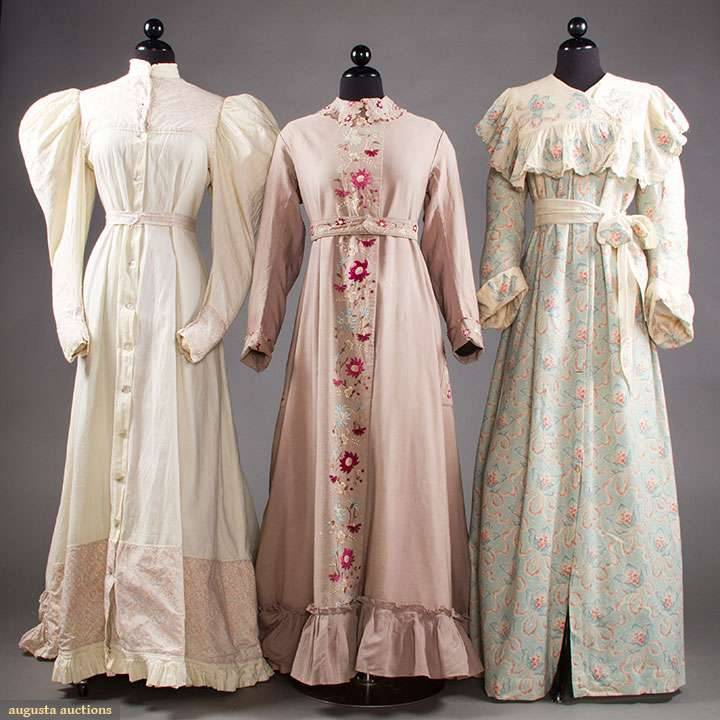
The white dressing gown definitely had the same lines I was looking for in recreating a wrapper for myself.
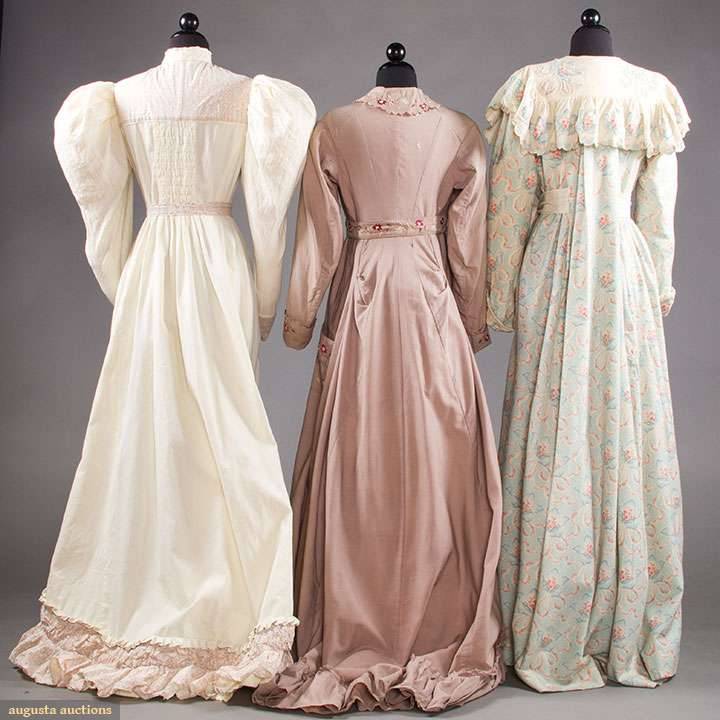
Here is a 1991 fashion plate from Harper’s Bazaar showing two House Toilettes, yet another name when going down the research rabbit hole.

Wrapper
The wrapper often features a simpler design compared to a dressing gown or tea gown. I am drawn to the charm of wrappers.

Embellishments can be found in the form of strips of fabric, piping, or ruffles made from the same or a coordinating fabric.
This style was definitely more in keeping with my budget.
This 1889 magazine illustration shows a diagram of pattern pieces so an industrious seamstress could make her own.
Update: I was notified by a reader, Robin, that this image is of a coat. She wrote that “They are outerwear, and with the unusual folded sleeve attached to the back of the garment are often known as dolman mantles.”
I always appreciate learning. Thank you, Robin!


Yes, this was a lovely wrapper I could see myself wearing. But perhaps with the large leg of mutton (gigot) sleeves favored in the 1890s.

Tea Gown
A tea-gown generally refers to a gown that is made of a finer fabric such as silk or cotton lawn. It is often embellished with beautiful lace. Even with such beauty, it was still primarily a dress worn when receiving a guest at home.
Be still my heart! Give me all the tucks, lace, and ruffles.
I noticed that tea gowns tended to have a much longer train as well.

While I adore a good, long train (I’m thinking of you Lady Diana Spencer), it was not a design element that I wanted for my own wrapper. A shorter hem length was needed.

Yes, I needed a wrapper that would be the tea gowns more hardworking sister. But she would still be pretty!
This is a good time to mention that color was immensely favored by the late Victorian’s. Many people are so used to seeing black and white or sepia-toned photographs that they forget garments were indeed made in all sorts of glorious hues!

Kay’s Housekeeping Dress
A spin around Etsy revealed several wrapper patterns. I selected Kay’s Housekeeping Dress pattern. It was designed to be an adaptable dress pattern for everyday wear for the 1880s and 1890s.
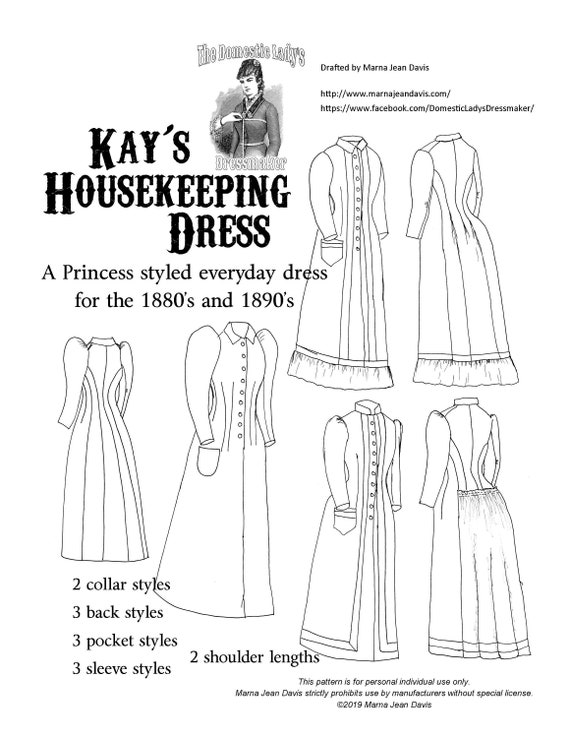
The pattern designer, Marna Davis, is a longtime collector of extant (antique) dresses. I had taken a dressmaking class from Marna in January 2019. She truly knows her stuff! I learned so much about historic sewing methods. If you are interested in further information on Marna’s research for this particular pattern please read this post HERE.

Just Call Me Scarlett
All of my historic presentations are done on a volunteer basis. I do not charge any fees as museums and schools are usually struggling to survive. That said, I am very frugal in my dressmaking. Sheets, tablecloths, and drapes are considered fair fabric game.
/cdn.vox-cdn.com/uploads/chorus_asset/file/18686189/999126.jpg)
Last fall I attended an estate sale of a retired interior designer. Stacks of glorious fabric! There was also a set of curtains with a coordinating valance. They were of a design that was the height of chic in the 1980s when glazed cotton chintz reigned supreme. Imagine this design but in purple and burgundy.

I went back in the afternoon of the last day of the sale. Huge tubs of fabric were mine for the taking for mere pennies. The drapes were also still there. They were in excellent condition. But what would I do with this gaudy fabric I was so strangely attracted to?
I went with the buy what you love and figure it out later philosophy.
A few months later in my research, I spied several purple tea gowns and wrappers.
As well as burgundy, wine, maroon…whatever hue moniker you wish to use.
I spent a day taking the drapes apart. No, I didn’t feel guilty about this. If someone had wanted those drapes “as is” they would have bought them. I rescued that fabric from potentially ending up in the landfill. Reduce, reuse, recycle!
Even so, I didn’t quite have enough fabric to make the wrapper from a single fabric. The pattern pieces are not separate bodice and skirts but more of a princess/longline cut. Meaning the front, back, and sides each required one single long length of fabric.
So I would need to combine both of the fabrics. This was an absolutely historically accurate design decision.
That’s A Wrap!
I am really pleased with how the wrapper turned out.
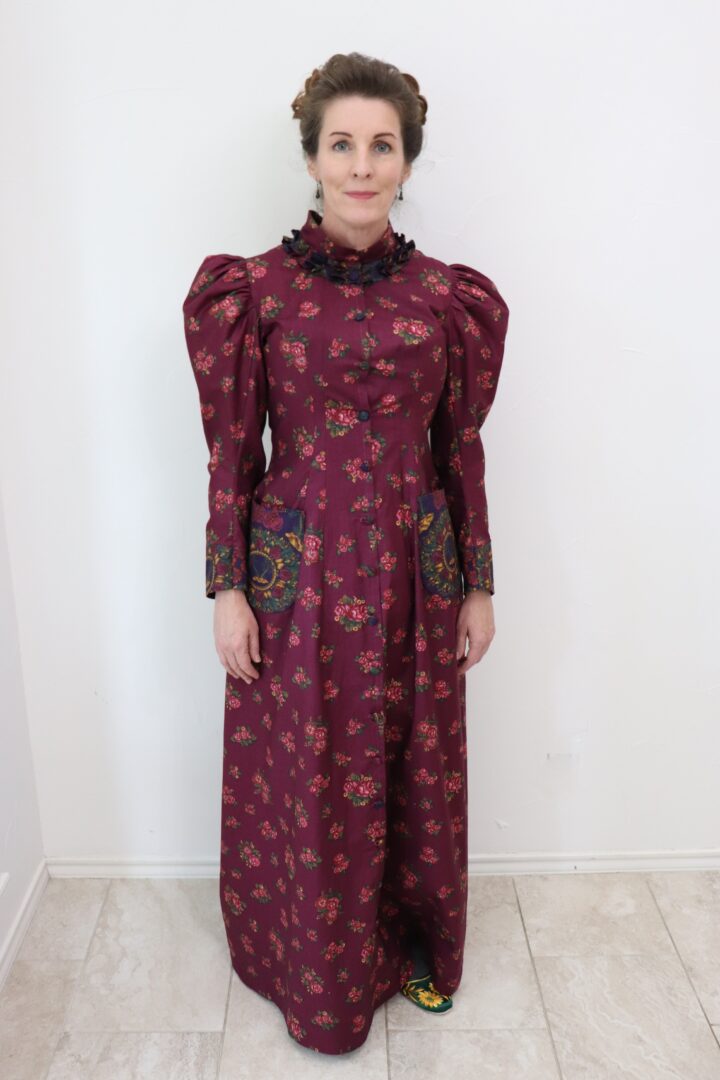
Out of necessity, I opted to make the backside panels out of the coordinating fabric. But I love the final design. It really shows off the details of the back bustle pleating.
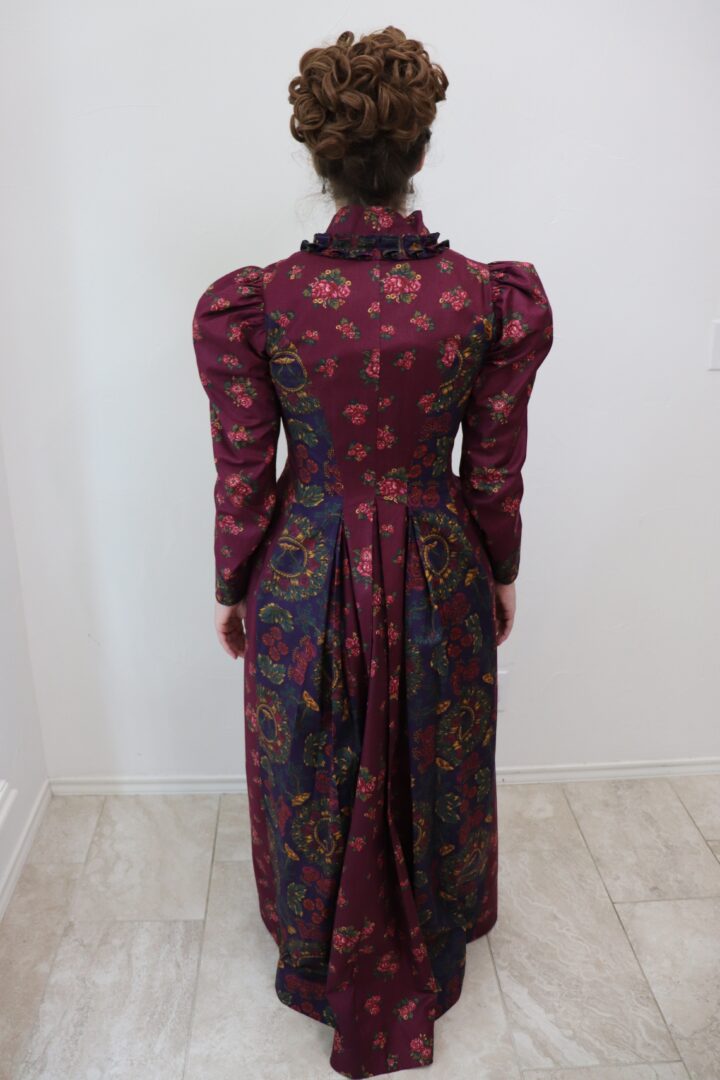
Who doesn’t love a good pocket?
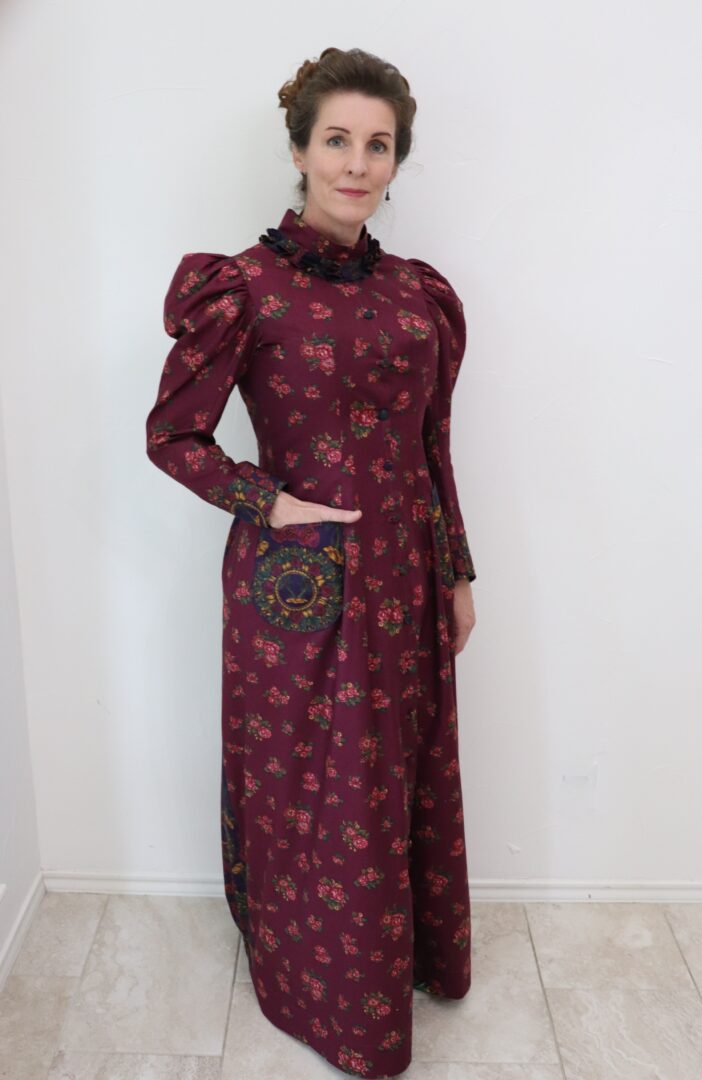
The ruffled neckline accent, shield-shaped cuffs, pockets, and buttons are also made from the purple accent fabric.
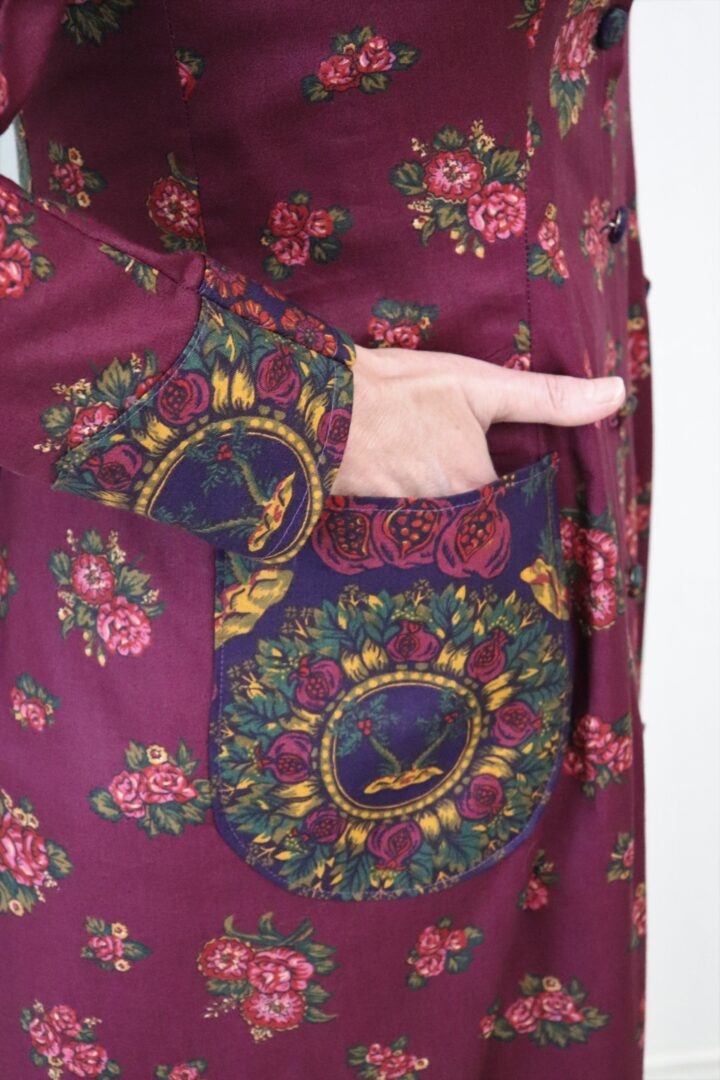
The leg of mutton sleeves has an interior lining of support made from cotton organdy to help keep their shape.
PLEASE NOTE: The next set of photographs will include historically styled undergarments.
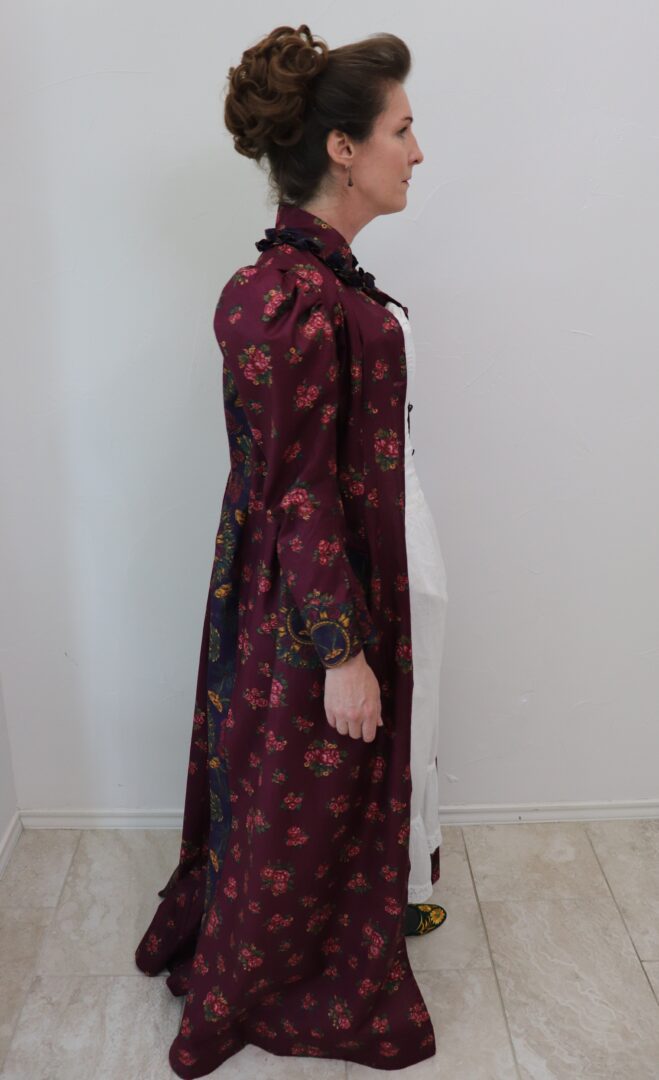
What Lies Beneath
The turn of the century undergarments worn under the wrapper is an antique cotton chemise, corset, and combination antique petticoat/bloomers.
I am also wearing grey cotton stockings and embroidered silk slippers (a fun estate sale find).
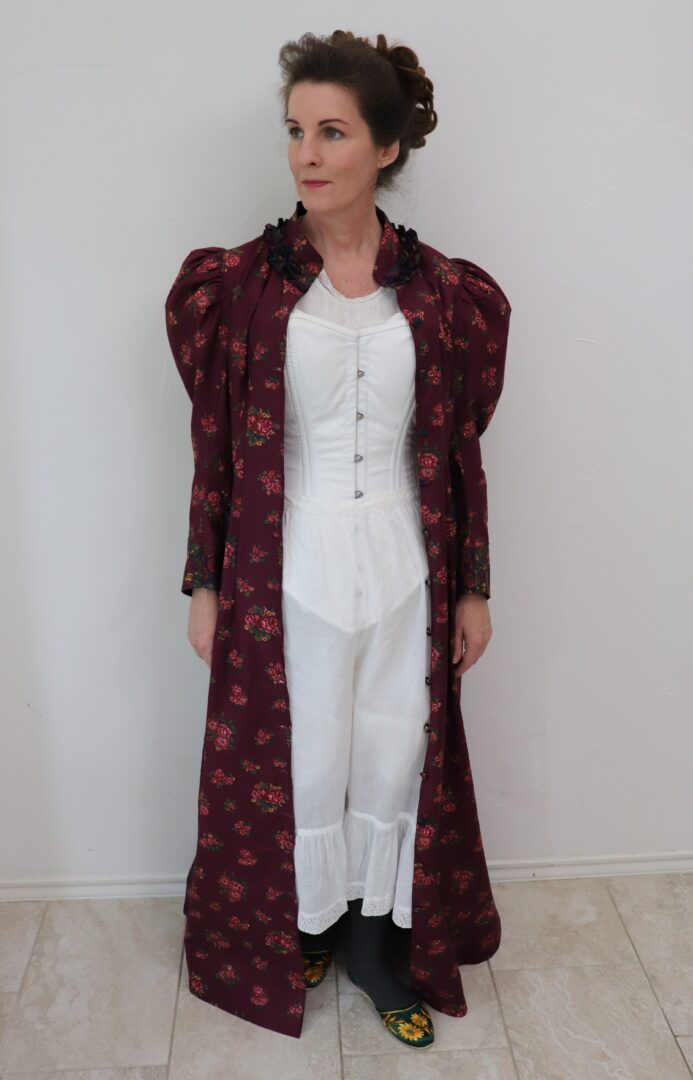
Circling back to the suffragettes, it was not uncommon for ladies (as well as men) to support the cause through fashion. I had written about this in a previous post.
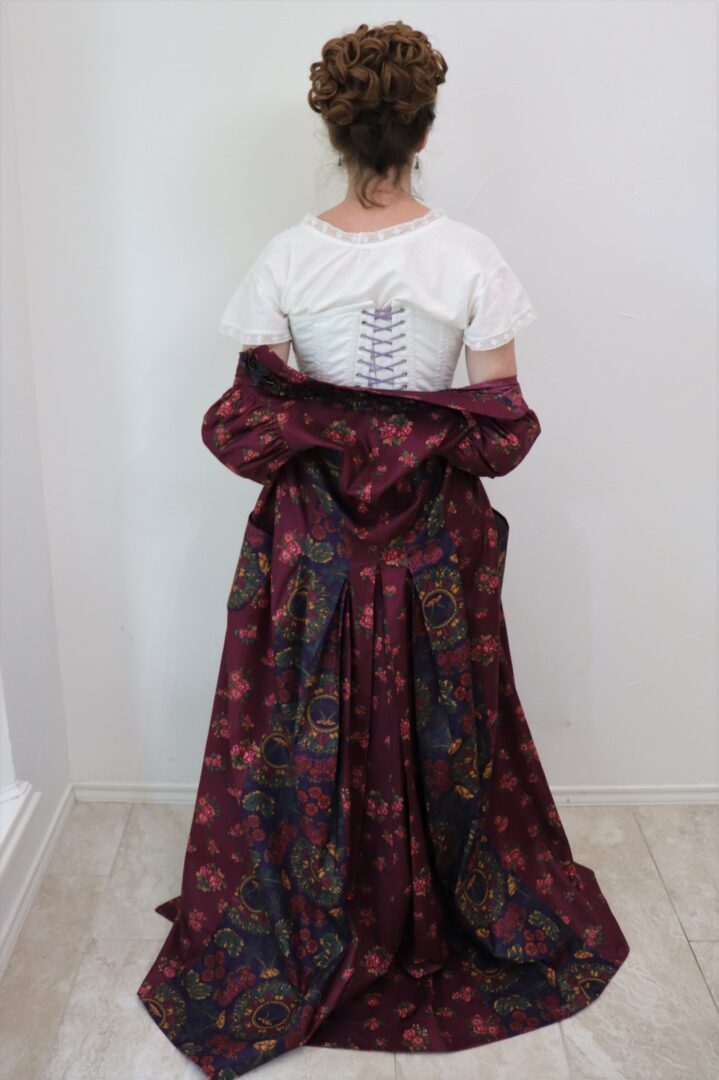
The cotton corset laces were hand-dyed a glorious purple as a wink and a nod to these fabulously brave ladies!
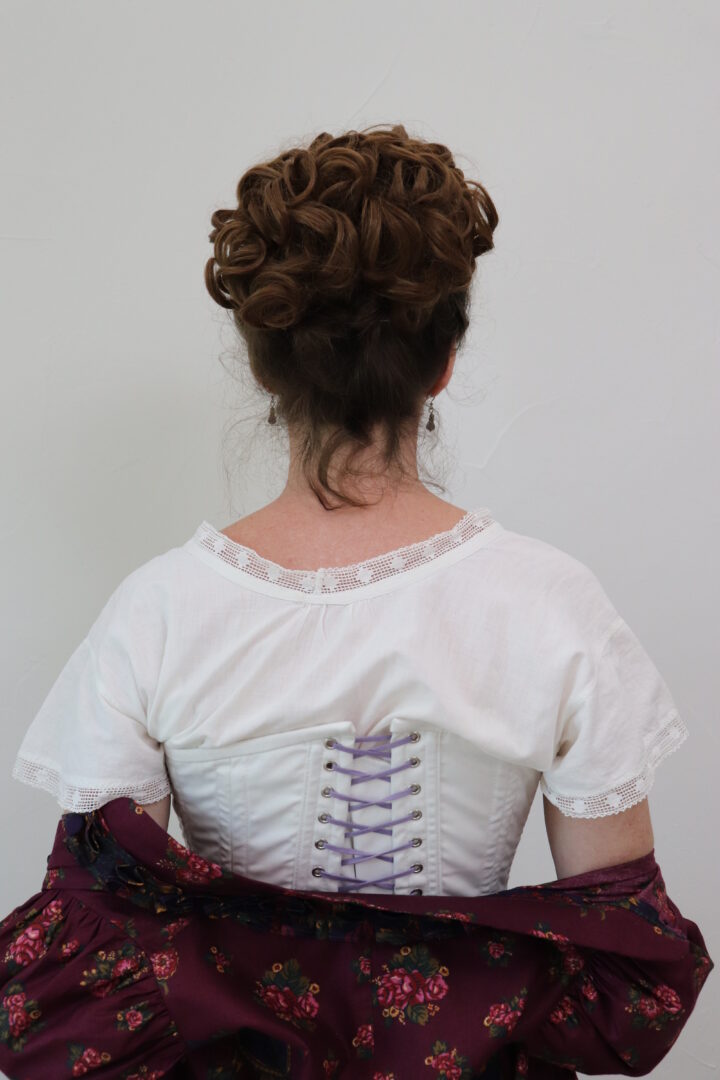
I hope you have enjoyed this most recent labor of love.

Next Friday we’ll be looking at Suffragette Fashions worn outside the home.
Laura


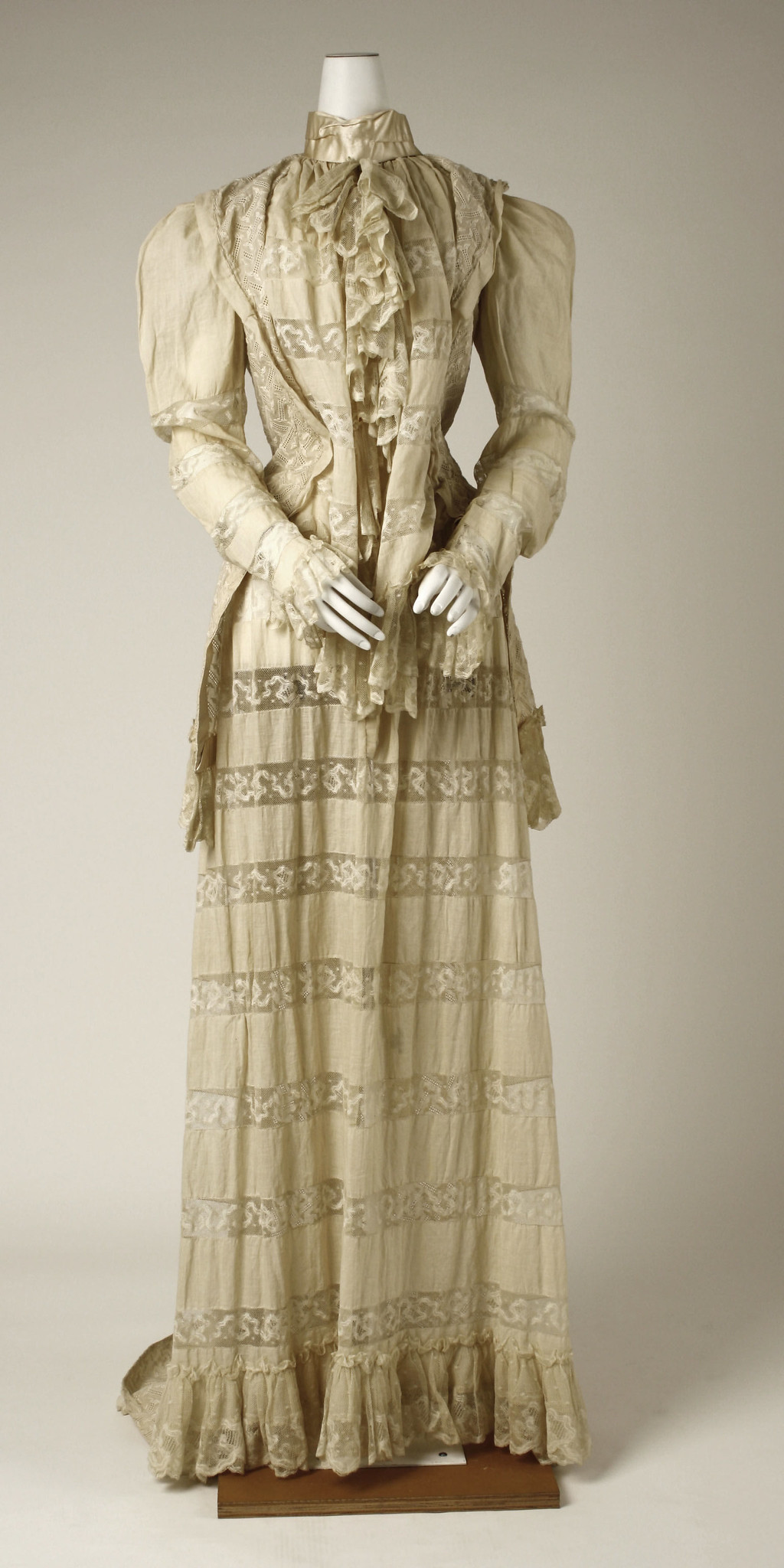
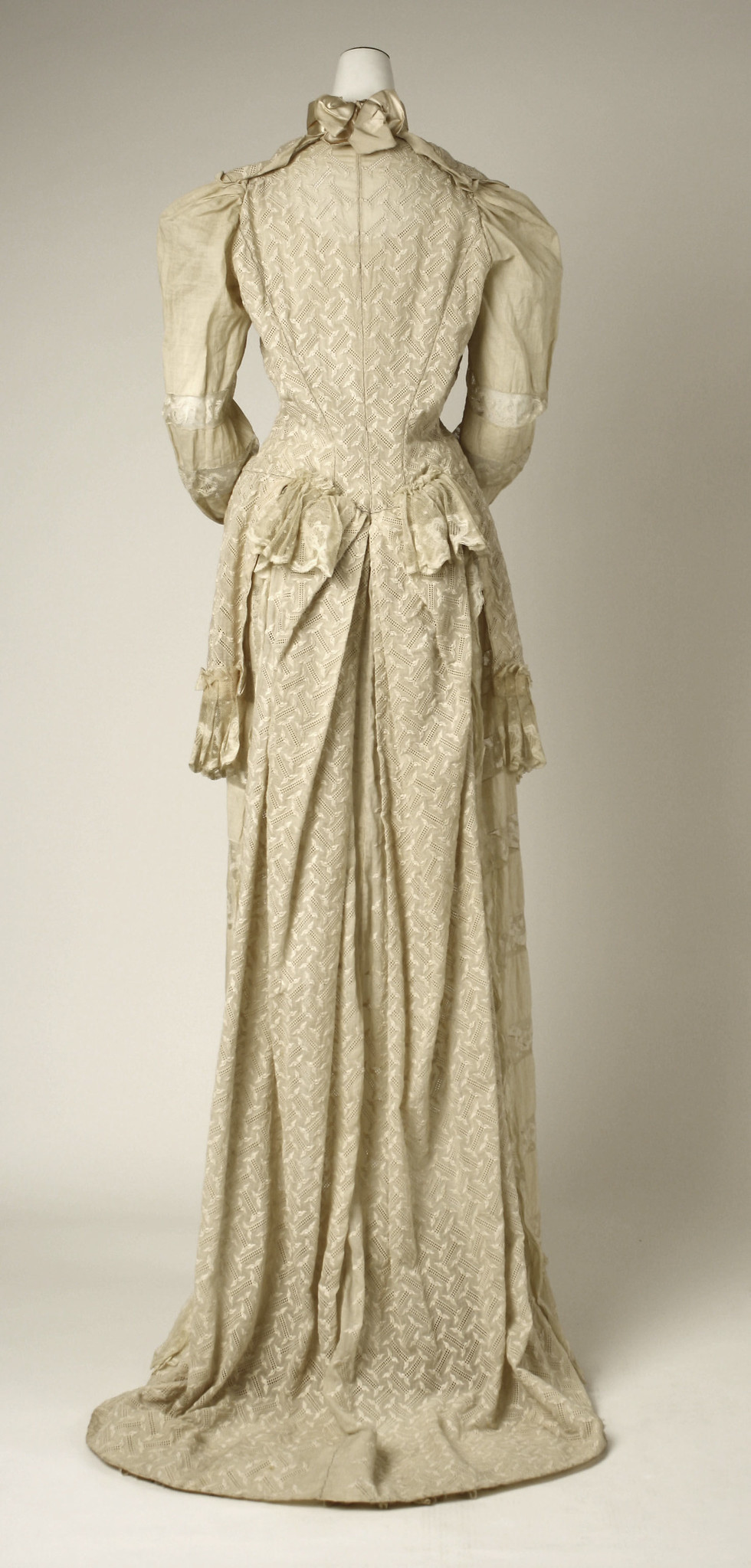



Very pretty!
WOW Laura! I truly LOVE this wrapper! The fabric and how you used it to accent the back, the pockets and cuffs is a stunning end result! Undergarments are lovely as well. Bravo!
Amazing. Love all the details!
Laura, THAT is the most beautiful thing I have ever seen.
That is just gorgeous! I love the way the contrasting back panels look and the fussy cut pockets and cuffs. Very creative! That’s the perfet hair style with your wrapper too.
I was just rereading “Jo’s Boys” and knowing that your wrapper would soon be posted, was quite struck of the description of Aunt Jo flying downstairs in her wrapper with “crimping pins” in her hair on the morning of Graduation when Franz and Emil arrive with their new brides. Having seen your wrapper on Instagram made the scene all the more vivid to me!
Laura,
as usual a superb job on the garment!
my question is, once completed and shown on your blog, what do you do with the garments?
Loui
Hi Loui,
For this particular garment, it will be part of a Suffragette fashion show and display for the Farmers Branch Historical Park here in Dallas. Eventually, when it is returned to me I will wear it as a robe/housecoat. It is extremely comfortable.
For vintage garments, such as house dresses/blouses I actually wear those in my everyday life.
For other historical garments, I wear them to various events I attend with the Dallas Fort Worth Costumers Guild. Once they have been “seen” a few times I donate the costumes to my son’s high school theater department.
Everybody wins!
Laura
What a feast for the eyes in all those pictures! Yours turned out wonderfully.
Wonderful post to see. You have done a beautiful job on wrap. It’s gorgeous.
d
Speechless. This is, I think, my favorite of all the ones you’ve done. I don’t know if it is the style, the color, the fabrics or the stories behind the creation but it is exquisite and you look exquisite in it.